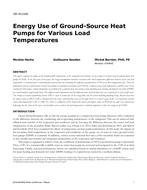Portland cement plaster, or stucco, is a timeless cladding, yet industry changes are making it increasingly difficult for designers to specify. Three-coat stucco, lath, and two layers of building paper have been specified for exterior building walls in climates like coastal California for years — and still are today. However, the process for analyzing stucco walls is more complicated due to building code changes related to insulation requirements and the availability of multiple water-resistive barrier types. Designers often use WUFI 6.2 (WUFI; by the Fraunhofer Institute for Building Physics) modeling software to analyze the heat and moisture migration (i.e., hygrothermal) through building assemblies over time. This type of computer analysis can raise new questions and challenges.
WUFI provides a built-in material database that includes a stucco material, called “Regular Portland Stucco”. We have found modeling can calculate unreasonably high moisture content in exterior wall building components when located in a California mixed climate with “Regular Portland Stucco” cladding and a vapor-permeable water-resistive barrier. This condition can overwhelm the exterior wall cavity with the excess moisture diffusion from the stucco, which fails the wall. The hygrothermal analysis results conflict with our experience that these wall assemblies perform well in this climate.
Product Details
- Published:
- 2019
- Number of Pages:
- 9
- Units of Measure:
- Dual
- File Size:
- 1 file , 1.8 MB
- Product Code(s):
- D-Bldgs19-019


